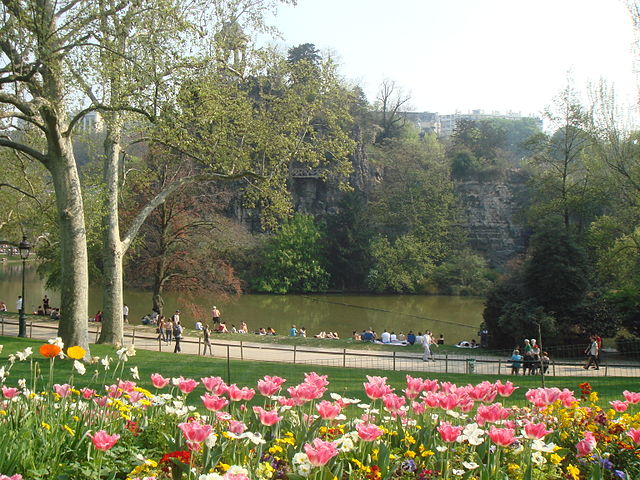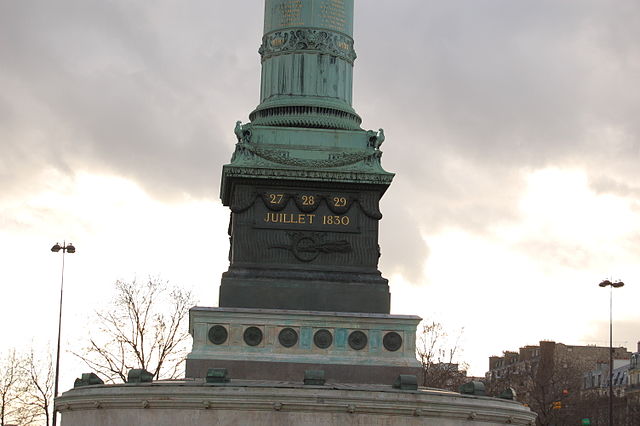Paris is a great city in France with so
many interesting, beautiful and worth visiting places like parks, gardens,
monuments, canyons, fountains, etc. Paris is known as “City of Lights” and also
as “Capital of Fashion.” Paris is divided into 20 districts; these districts
are called “arrondissement.” Each and every arrondissement has its own tourist
attractions; here is a sneak preview of some of the brilliant looking parks in
Paris.
Name
of the Park: Parc de Belleville
Location:
20th arrondissement
 |
| Parc de Belleville, the highest park in Paris |
Parc de
Belleville is the highest park in Paris as it is situated at a height of
108 meters on the Belleville hills; architect Francois Debulois and landscaper
Paul Brichet are the masterminds behind the idea of this park. This is the best
place to get the panoramic view of the city.
What
it offers to visitors?
- The longest
fountain in Paris (100m long)
- Wooden
playground for kids
- More than 1000
varieties of trees and shrubs
- Open-air theatre
- Ping-Pong tables
- Maison de l’Air
– a museum that teaches visitors about pollution and how important fresh air is
- Display of
annual flowers
Opening
Hours *
Park is open throughout the year; however,
the opening and closing time changes according to the weather. Closing time
varies from as early as 5:30 p.m. to as late as 9:30 p.m.
Weekdays – Opens at 8 a.m., weekends –
opens at 9 a.m.
Closing
Hours
November 16 to January: closes at 5:30 p.m.
February, November 1 to 15: closes at 6:00
p.m.
March: closes at 7:00 p.m.
October: closes at 8:00 p.m.
September: closes at 8:30 p.m.
April 15 to May 15: closes at 9:00 p.m.
May 16 to August 31: closes at 9:30 p.m.
Entrance
Fee: *
Adults – 2 Euros
Persons aged 7 and 25 – 1 Euro
Children under 7 years of age – Free
Name
of the park: Parc des Buttes Chaumont
Location:
19th arrondissement
 |
| Parc des Buttes Chaumont, third largest park in Paris |
Parc
des Buttes Chaumont is the third largest park in Paris and is a public
garden. This park was a gypsum and limestone quarry, which was later converted
to a park. This park is the brainchild of engineer Jean-Charles Alphand,
horticulturist Jean-Pierre Barillet-Deschamps and architect Gabriel Davioud. The
park has 5 large gates and 7 smaller gates.
What
it offers to visitors?
- Cliffs, bridges
(63 m long suspension bridge called the suicide bridge), man-made streams
- Grotto with a
20m high waterfall
- Playgrounds for
children, outdoor terrace, roller rink
- English and
Chinese gardens
- Belvedere of
Sybil
- Exotic trees
- Restaurants,
theatres, and Waffle Stands
Opening
Hours
The park is opened all through the year; it
opens at 7 a.m. regardless of the season.
Closing
Hours
November through March: 9:00 p.m.
April through October: 11:00 p.m.
Entrance
Fee *
There is no entrance fee; however, to
access the island by boat, fee has to be paid.
Name
of the park: Parc de la Villette
Location:
19th arrondissement
Parc de la Villette, designed by architect
Bernard Tschumi is one of the largest parks in Paris. Bernard Tschumi actually
won a design competition for the park; however, many other architects have
played a major role in the construction of concert halls, museums, theatres,
etc. It is estimated that nearly 10 million people visit Parc de la Villette in
a year.
What
it offers to visitors?
- Cite des
Sciences et de l’Industrie, Europe’s largest science museum
- Cite de la
musique
- 6,300 seat
capacity concert arena called “Le Zenith” (the largest concert arena in Paris)
- Playgrounds for
children
- 35 architecture
follies
- Bamboo garden
and themed gardens include the garden of equilibria, the garden of islands, the
shadows of the gardens, garden of childhood fears, etc.
One has to buy tickets for the shows and
workshops held at Parc de la Villette, which can be done either by visiting
their website or calling them up over the phone.
Name
of the park: Parc Andre Citroen
Location:
XVe Arrondissement
 |
| Th walkway at the Parc Andre Citroen |
Parc Andre Citroen was named after the
founder of the company called Citroen automobile manufacturing plant, Andre
Citroen as this public park was built on the site where the automobile
manufacturing plant was earlier. It is a 14 hectare public park that was
designed by architects Patrick Berger, Jean-Paul Viguier and Jean-Francois
Jodry.
What
it offers to visitors?
- Six serial
gardens where each garden is associated with a planet, a metal, a sense, a day
in a week, and a state of water
- Garden in
Movement, the wild grasses in the garden move or respond to the difference in
the speed of wind velocity
- A moored gas
balloon that offers picturesque view of various historical places of Paris like
River Seine, Notre Dame de Paris cathedral, Champ de Mars, etc.
- Fountains and
greenhouses
- Play area for
children in the white and black garden
Opening
Hours *
May through September: 9:00 a.m. on all
days
Closing
Hours *
May through September 8:30 p.m. on all days
Entrance
Fee *
The entry to the park is free.
Name
of the park: Parc Montsouris
Location:
14th arrondissement
 |
| Parc Montsouris, a public park ordained by Napoleon III and Baron Haussmann |
Parc Montsouris is a 15 hectares public park
ordained by Napoleon III and Baron Haussmann. This park resembles an English
garden, which is quite popular genre during 19th century.
What
it offers to visitors?
- A water reservoir
on the northeast side of the park offers an entrance to the famous Paris
catacombs
- Wonderful flora
and fauna
- Bronze and
marble sculptures
- Children
playgrounds and ping-pong tables
- Snack and
refreshment centers
Opening
Hours
May through August: 8:00 a.m. on weekdays
and 9:00 a.m. on weekends
Closing
Hours
May through August: 9:30 p.m. on all days
including weekends
Entrance
fee
They do no charge anything as an entrance
fee.
Name
of the park: Parc de Bercy
Location:
14th arrondissement
 |
| Parc de Bercy, a park that contains a cluster three connected gardens |
Parc de Bercy is a 14 hectare area park and
one of the important parks in Paris; it is a set or cluster of three connected
gardens designed by various well-known architects like Bernard Huet,
Jean-Pierre Feugas, Philippe Raguin, etc.
What
it offers to visitors?
- Three gardens
called Romantic Garden, Flowerbeds and Meadows
- Playgrounds,
pony rides, ping-pong, etc.
- Eateries and
water points
Opening
Hours
May through August: 8:00 a.m. on weekdays
and 9:00 a.m. on weekends
Closing
Hours
May through August: 9:30 p.m. on all days
including weekends
Entrance
fee
They do no charge anything as an entrance
fee.
Name
of the park: Parc Monceau
Location:
8th arrondissement
 |
| Parc Monceau, an English style park in Paris |
Parc Monceau is a 8.2 hectares public park
and was designed by Louis Carrogis Carmontelle, a famous writer and painter. It
is an English style park with informal layout and curved walkways.
What
it offers to visitors?
- Playgrounds for
children, swings and small carousel
- Eateries and
water points
- Exotic trees and
birds
Opening
Hours
May through August: 7:00 a.m. on all days
including weekends
Closing
Hours
May through August: 10:00 p.m. on all days
including weekends
Entrance
fee
They do no charge anything as an entrance
fee.
Make sure you visit these parks, which are
an important tourist destination in Paris when planning a visit to Paris.












.jpg)




.JPG)






























